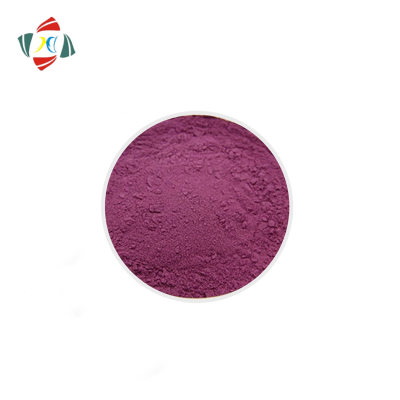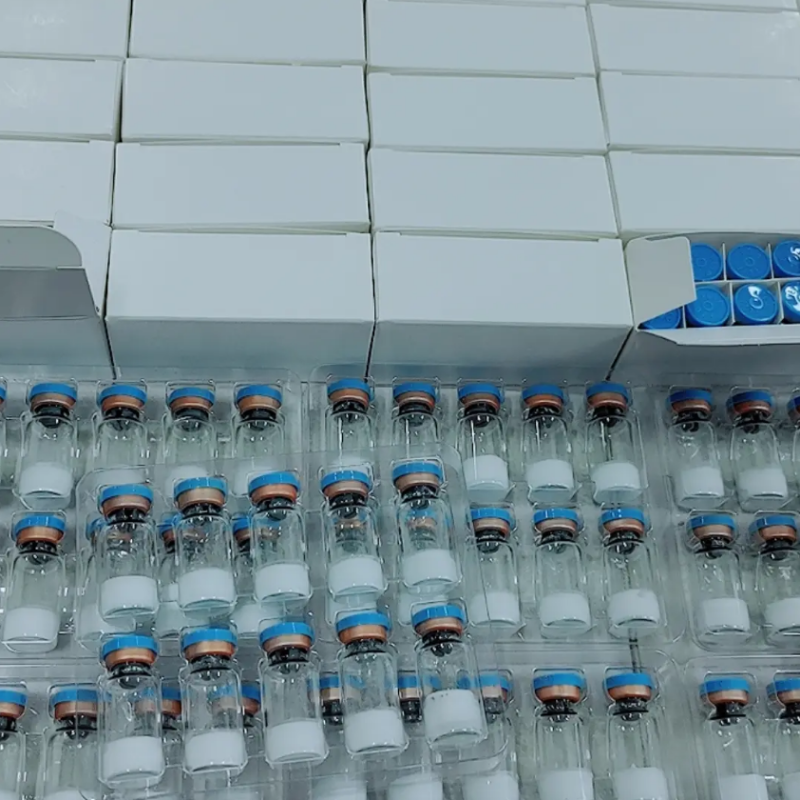Structural damage to mid-axis spinal arthritis, which can cause these hazards to patients!
-
Last Update: 2020-07-23
-
Source: Internet
-
Author: User
Search more information of high quality chemicals, good prices and reliable suppliers, visit
www.echemi.com
Don't want to miss Jiemei's push? Poke the blue word "medical rheumatism and nephropathy channel" to pay attention to us and click the "··" menu in the upper right corner and select "set as star marker". In clinical treatment, delaying the structural damage of axspa should be regarded as an important goal, so as to reduce the progress of disease and the pain of patients.structural damage in axial spondyloarthritis (axspa) is not only an important disease sign, but also may be associated with increased disease activity and increased cardiovascular risk.What are the potential risk factors of axspa structural damage? What harm will the structural damage of this disease bring to patients? How to better assess the structural damage of the disease? A number of studies have explored this series of issues in the 2012 ACR conference.the seven potential risk factors of spinal structural injury in patients with 01as, have you got it? Spinal structural damage in patients with ankylosing spondylitis (as) may lead to physical dysfunction and decreased spinal mobility.although great progress has been made in the research of potential risk factors related to the severity of spinal structural injury, there is still no clear consensus on how many factors are involved in the development of spinal structural injury.to obtain more information, the researchers conducted a cross-sectional study of 270 Chinese patients to determine the potential risk factors for the severity of spinal structural injury alone or in combination [1].results univariate analysis showed that body mass index (BMI), smoking time, symptom duration, delayed diagnosis, hip involvement and sacroiliac arthritis classification were significantly associated with the modified stoke ankylosing spondylitis spine score (msasss) (Table 1).Table 1 seven risk factors of as structural damage. In further analysis, the researchers found that hip joint involvement had significant interaction with BMI and smoking duration.compared with patients with low BMI and negative hip involvement, patients with high BMI and negative hip involvement, patients with positive low BMI and hip involvement, and patients with high BMI and positive hip involvement had an increased risk of high msassss by 1.94, 3.29 and 5.07 times, respectively (95% CI: 0.84-4.47, 1.37-7.89, 1.97-13.06, P = 0.118, 0.008, 0.001), respectively.in order to facilitate clinical evaluation, a nomogram with high prediction accuracy was generated based on seven significant risk factors (Figure 1); except for the classification of sacroiliac arthritis, the correlation between age of onset and BMI was stronger than other risk factors and structural damage.Figure 1, nomogram 02 the relationship between radiological progress and disease activity must be said. There is a correlation between disease activity and spinal radiological progress in patients with radiation-induced axial spondylarthritis (r-axspa), which has been confirmed by the data of a group of patients without TNF inhibitor treatment.patients with axspa who met the modified New York criteria were included in this prospective, observational cohort (Alberta force). The clinical and imaging data of axspa patients were collected from baseline to 10 years, and the possible relationship between disease activity and spine X-ray images in the real world cohort was further explored [2].two types of longitudinal GEE models were used to assess the correlation between the asdas score at the start time (T) and the (T + 1) msasss score two years later. Both models were adjusted for msassss (Autoregression) at t and a set of potential confounding factors that had been previously identified on clinical basis.in the real world cohort, including patients treated with or without TNF inhibitors, the results showed that there was a correlation between ankylosing spondylitis disease activity score (asdas) and spinal imaging progress regardless of whether the patients were treated with or without TNF inhibitors. For every 1 point increase in asdas, the msasss score increased by 0.25 points at t + 1 time (Fig. 2).Fig. 2 there was a correlation between asdas and msasss in patients with or without TNF treatment. 03axspa structural damage may increase the cardiovascular risk of patients? The aim of this study was to assess the association between structural damage, atherosclerotic plaque, endothelial function and increased cardiovascular (CV) risk in patients with axspa [3].a cross-sectional study of 85 axspa patients from the Cordoba spa registry was conducted.the results showed that there was a direct linear relationship between CV risk and total msasss, lumbar msasss, cervical msassss and bone bridge. the analysis of carotid atherosclerotic plaques showed that the age, course of disease and radiation injury related variables (total msasss, cervical msasss, lumbar msasss and bone bridge) of axspa patients with atherosclerotic plaque were significantly higher than those of the normal control group (P & lt; 0.05). in addition, cervical msasss (P = 0.063) and age (P & lt; 0.0001) were associated with score index in multiple linear regression analysis, and were predictors of increased CV risk. vascular endothelial function was negatively correlated with total msasss and lumbar msasss (P & lt; 0.05). this result confirmed that the presence of atherosclerotic plaques in patients with axspa is not only related to age, course of disease, but also to the progress of radiology. age and structural damage can predict an increased risk of CV disease in axspa patients. therefore, we observed a significant increase in the risk of CV disease in elderly axspa patients with structural injury, especially in patients with cervical structural injury. Endothelial dysfunction was also found in patients with axspa. 04mri sacroiliac joint inflammation or predict long-term structural damage at the same site? The presence of MRI inflammation in the sacroiliac joint (SIJ) is associated with overall radiation injury in axspa patients for 5 years. but does bone marrow edema (BME) damage lead to structural damage in the same part (i.e. the same quadrant)? There is no final conclusion. the purpose of this study was to explore the relationship between BME and structural progression in the same SIJ quadrant over time [4]. a total of 197 patients were included in the study. When BME and adipose lesions were evenly distributed in each quadrant, bone erosion and sclerosis occurred more in the ilium side. over time, the incidence of BME decreased, while the incidence of bone erosion, especially fatty lesions, increased significantly. ankylosis and sclerosis are rarely seen in this early axspa cohort. in early axspa patients, inflammation in one SIJ quadrant can cause structural damage in the same quadrant (Table 2). this finding confirmed the pathophysiological significance of axspa inflammation. Table 2 the longitudinal correlation between BME and structural progress in the same quadrant in 5 years.05 low dose CT may help doctors to evaluate more comprehensively the inflammation and new bone formation of axial bone in disease structural progression as the characteristic manifestations of r-axspa. in r-axspa, spinal facet joints are often involved, but it is difficult to display on conventional X-ray images (CR). however, recently, some researchers found that low-dose CT (LDCT) can be used to evaluate the facet joint stiffness of the whole spine except for the cervical thoracic junction [5]. fifty three patients with r-axspa were included in the study, and they were followed up by LDCT for 2 years. the results confirmed that during the 2-year follow-up period, a considerable number of patients developed facet joint ankylosis, and the main site of progression was thoracic facet joint (Table 3). these results suggest that whole spine LDCT can provide useful information for the development of new bone formation in patients with r-axspa. Table 3 total number of patients with facet ankylosis in 2 years. In the process of disease development of axspa, structural damage is an extremely important link. in clinical treatment, delaying the structural damage of axspa should be regarded as an important goal, so as to reduce the progression of the disease and reduce the pain of patients. [2] Alexandre sepriano, et al. ACR / ARP annual meeting, november8-13, 2019, Atlanta, USA, 8 [2] Alexandre sepriano, et al. ACR / ARP annual meeting, november8-13, 2019, Atlanta, USA, ා 2779 [3] Mar í a lourdeseladehesa Pineda, et al. ACR / ARP / ARP / ARP annual meeting, et al. ACR / ARP annumeeting, et al. ACR / ARP annual meeting, november8-13, 2019, Atlanta, USA, # [3] Mar í a lourdeseladehesa Pineda, et al. ACR / ARP / ARP / ARP, ARP, ARP, ARP, ALP, ALP, ARP, arpannual meeting, November 8-132019, Atlanta, USA, ා 635 [4] Santiago Rodrigues-Manica, et al.ACR/ARP Annual meeting, November 8-13, 2019, Atlanta, USA, [5] Rosalinde stal, et al. ACR / ARP annual meeting, November 8-13, 2019, Atlanta, USA!
This article is an English version of an article which is originally in the Chinese language on echemi.com and is provided for information purposes only.
This website makes no representation or warranty of any kind, either expressed or implied, as to the accuracy, completeness ownership or reliability of
the article or any translations thereof. If you have any concerns or complaints relating to the article, please send an email, providing a detailed
description of the concern or complaint, to
service@echemi.com. A staff member will contact you within 5 working days. Once verified, infringing content
will be removed immediately.







